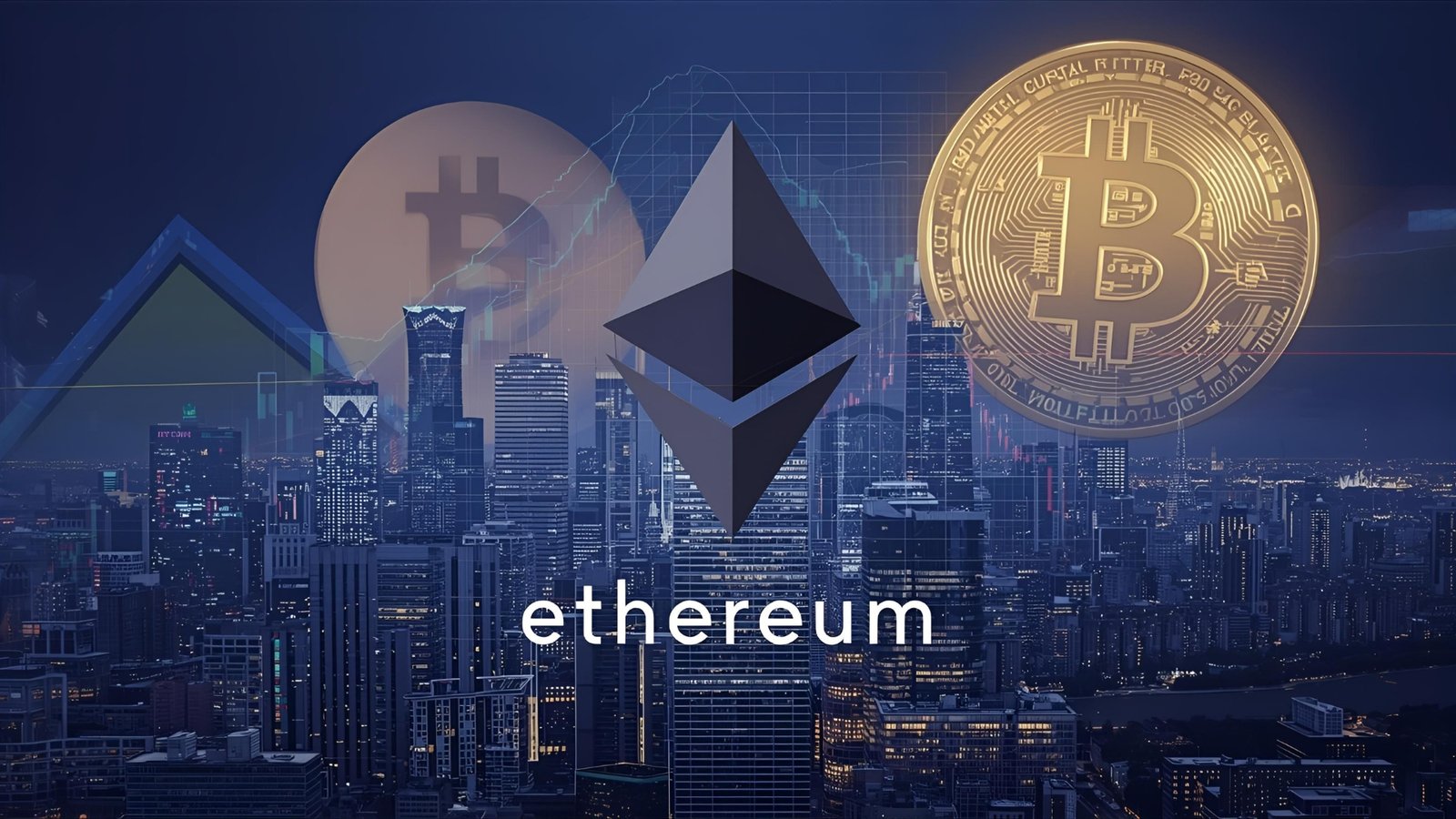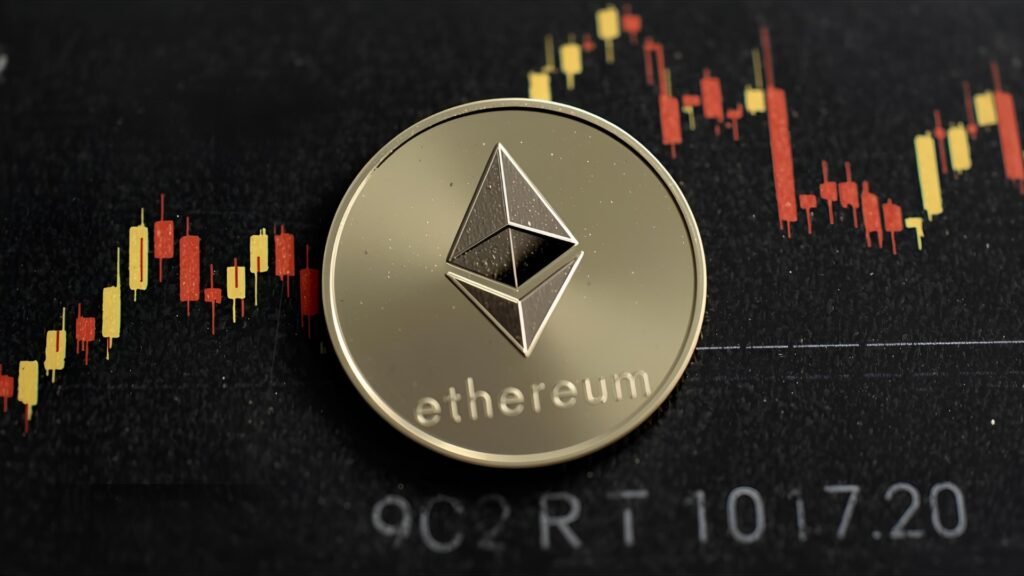The cryptocurrency market is entering yet another decisive phase as the Ethereum price shows renewed strength against Bitcoin. Over the past few months, Bitcoin has remained the dominant force in the digital asset space, often dictating the broader market trend. However, analysts are increasingly pointing toward Ethereum as the potential outperformer in October, citing its network upgrades, institutional adoption, and growing demand for decentralized finance (DeFi) and NFTs.
In this in-depth analysis, we will explore why experts believe ETH price could gain significant traction in the coming weeks, how it compares to Bitcoin’s current momentum, and what factors investors should keep an eye on. From technical charts to market sentiment, Ethereum appears ready to challenge Bitcoin’s dominance in the short term.
Ethereum Price Momentum Building in October
The month of October has historically been favorable for cryptocurrencies, often dubbed “Uptober” by the crypto community due to seasonal bullish trends. This year, Ethereum is showing signs of strong accumulation as on-chain data highlights an increase in both whale activity and institutional inflows.
Unlike Bitcoin, which primarily serves as a store of value and hedge against inflation, Ethereum’s use cases continue to expand. The Ethereum blockchain powers decentralized applications, DeFi protocols, and NFT marketplaces, making it more versatile in terms of adoption. With the recent Ethereum network upgrades enhancing scalability and reducing gas fees, traders expect increased utility to fuel ETH demand.
Why Analysts Expect Ethereum to Outperform Bitcoin

Several market analysts argue that Ethereum could see stronger gains than Bitcoin in October. The reasons range from fundamental growth to technical setups that favor ETH.
Network Growth and Adoption
Ethereum’s ecosystem expansion remains unmatched. Developers continue to launch innovative projects on the Ethereum Virtual Machine (EVM), while new layer-2 solutions such as Arbitrum and Optimism are reducing transaction costs. This level of activity creates stronger long-term demand for ETH compared to Bitcoin, which lacks a comparable development ecosystem.
Institutional Investment in ETH
Data from major crypto exchanges and custodians suggest that institutional investors are showing growing interest in Ethereum. Unlike Bitcoin, which is often seen as “digital gold,” Ethereum is increasingly viewed as the backbone of Web3. Large funds and asset managers are diversifying their holdings with ETH, signaling confidence in Ethereum’s future.
Technical Indicators Favor ETH
From a technical analysis perspective, Ethereum is forming bullish chart patterns against Bitcoin. The ETH/BTC trading pair has shown signs of breaking resistance levels, suggesting ETH could gain relative strength. Analysts note that a sustained breakout above key levels may lead to accelerated price movements, potentially allowing Ethereum to outperform Bitcoin during October.
Bitcoin’s Current Position and Its Impact on Ethereum
While Ethereum is gaining momentum, Bitcoin remains the benchmark asset in crypto markets. Its dominance ratio, which measures Bitcoin’s share of the total crypto market capitalization, still hovers above 50%. This dominance often limits how much Ethereum can rally independently.
However, if Bitcoin consolidates in the $110,000 to $115,000 range without a significant breakout, it may allow Ethereum to capture investor attention. In such scenarios, Ethereum price performance typically improves as traders rotate funds from Bitcoin into altcoins. This phenomenon, often referred to as “alt season,” could be triggered by Bitcoin’s sideways movement.
The Role of Ethereum’s Upcoming Developments
Ethereum’s future trajectory is not solely reliant on market speculation. Its ongoing technological advancements play a crucial role in strengthening the fundamentals behind the price action.
Ethereum Upgrades and Gas Fee Reductions
The Ethereum Foundation has been working on continuous improvements post-Merge. The transition to proof-of-stake (PoS) has already reduced energy consumption by over 99%, making Ethereum more sustainable. Now, attention is shifting to scalability upgrades such as danksharding and rollup enhancements, which aim to lower gas fees and improve transaction speed.
Cheaper transactions could attract more users to DeFi platforms, decentralized exchanges (DEXs), and NFT marketplaces, directly increasing demand for ETH tokens.
Rising DeFi and NFT Activity
Despite the bear market of the past year, DeFi protocols on Ethereum continue to lock billions of dollars in total value. Similarly, NFTs, though quieter than during their 2021 boom, are still largely built on Ethereum. This activity ensures Ethereum remains the go-to platform for developers and users, further strengthening its long-term valuation.
Market Sentiment Around Ethereum in October
Investor psychology is an essential factor in driving crypto prices. Currently, sentiment around Ethereum is gradually improving. Social media mentions of ETH have risen, while Google search trends for “Ethereum price prediction” and “Ethereum outperforming Bitcoin” are gaining traction.
Whale Accumulation Trends
On-chain data reveals that Ethereum whales—wallets holding large amounts of ETH—are steadily increasing their holdings. This accumulation phase usually signals confidence in future gains and often precedes significant price rallies.
Retail Interest Returning
Retail investors, who were largely inactive during the recent crypto market downturn, are slowly re-entering Ethereum positions. This renewed retail participation, combined with institutional adoption, creates a balanced growth scenario that could fuel ETH price gains in October.
Risks and Challenges for Ethereum Price
Despite the bullish outlook, Ethereum faces several risks that could hinder its ability to outperform Bitcoin.
-
Regulatory Uncertainty: Governments worldwide are increasing scrutiny on cryptocurrencies, particularly around staking and DeFi platforms. Regulatory pressure on Ethereum-based services could negatively impact the ETH price.
-
Bitcoin’s Potential Breakout: If Bitcoin suddenly surges past its resistance levels, it could overshadow Ethereum and dominate market inflows once again.
-
High Competition from Other Blockchains: Competitors such as Solana, Avalanche, and Cardano are also improving scalability and transaction speeds. If these platforms capture significant market share, Ethereum’s dominance may be challenged.
-
Macro-Economic Conditions: Broader financial markets, including interest rates and global economic stability, will play a role in determining whether cryptocurrencies can sustain bullish momentum in October.
Ethereum Price Outlook: What to Expect in October

Considering both bullish catalysts and potential risks, the consensus among analysts is that Ethereum has a high probability of outperforming Bitcoin this month. While Bitcoin may continue to hold its role as a safe-haven digital asset, Ethereum’s growth in utility, adoption, and technological innovation makes it more attractive for traders seeking higher returns.
Short-term forecasts suggest ETH could test critical resistance levels above $3,800 if market momentum continues. Meanwhile, the ETH/BTC pair could push toward multi-month highs, confirming Ethereum’s relative strength.
See More: Best Cryptocurrency to Invest in 2025 Top 10 Picks
Conclusion
Ethereum stands at a pivotal moment in October, with multiple signals pointing toward a strong performance compared to Bitcoin. While Bitcoin remains the leading cryptocurrency by market cap, Ethereum’s versatility, network upgrades, and growing adoption across DeFi and NFTs make it a formidable challenger.
Analysts emphasize that the Ethereum price outlook for October is bullish, with ETH potentially outperforming Bitcoin if market conditions remain favorable. Investors, however, should remain cautious of regulatory risks and macroeconomic factors that could affect the broader crypto landscape.
FAQs
Q: Why do analysts think Ethereum could outperform Bitcoin in October?
Analysts highlight Ethereum’s strong network growth, institutional adoption, and bullish technical indicators as reasons it may outperform Bitcoin this month.
Q: What role do Ethereum upgrades play in its price performance?
Ethereum’s upgrades, including scalability improvements and reduced gas fees, enhance usability and drive demand for ETH across DeFi and NFT ecosystems.
Q: Can Bitcoin’s performance impact Ethereum’s price?
Yes. Bitcoin’s price movements often set the tone for the crypto market. If Bitcoin consolidates, Ethereum typically gains more attention from investors.
Q: What risks could prevent Ethereum from outperforming Bitcoin?
Key risks include regulatory challenges, a sudden Bitcoin breakout, competition from rival blockchains, and unfavorable macroeconomic conditions.
Q: What price levels should traders watch for Ethereum in October?
Traders are closely monitoring resistance around $3,800 and the ETH/BTC pair movements, which could confirm Ethereum’s strength relative to Bitcoin.



















